Milwaukee 2132-20 Handleiding
Bekijk gratis de handleiding van Milwaukee 2132-20 (12 pagina’s), behorend tot de categorie Zaklamp. Deze gids werd als nuttig beoordeeld door 39 mensen en kreeg gemiddeld 4.8 sterren uit 20 reviews. Heb je een vraag over Milwaukee 2132-20 of wil je andere gebruikers van dit product iets vragen? Stel een vraag
Pagina 1/12

Cat. No. / No de cat.
2132-20
M12™ DUAL POWER TOWER LIGHT
TOUR D’ÉCLAIRAGE À DUAL POUVOIR DEL M12 ™
LÁMPARA DUAL DE LA ENERGÍA TIPO TORRE M12™
OPERATOR'S MANUAL
MANUEL de L'UTILISATEUR
MANUAL del OPERADOR
WARNING To reduce the risk of injury, user must read and understand operator's manual.
AVERTISSEMENT An de réduire le risque de blessures, l'utilisateur doit lire et bien
comprendre le manuel.
ADVERTENCIA Para reducir el riesgo de lesiones, el usuario debe leer y entender el manual.

2
IMPORTANT SAFETY
INSTRUCTIONS
WARNING Read all safety warnings
and all instructions. Failure to follow the warnings
and instructions may result in electric shock, re and/or
serious injury. Save all warnings and instructions for
future reference.
WORK AREA SAFETY
• To reduce the risk of injury, close supervision is
necessary when an appliance is used near children.
• Store idle light out of reach of children. Warm lights
can become hazardous in the hands of children.
• Do not use outdoors.
ELECTRICAL SAFETY
• Power cord plugs must match the outlet. Never
modify the plug in any way. Do not use any adapter
plugs with earthed (grounded) power tools. Unmodi-
ed plugs and matching outlets will reduce risk of electric
shock.
• Avoid body contact with earthed or grounded sur-
faces, such as pipes, radiators, ranges and refrig-
erators. There is an increased risk of electric shock if
your body is earthed or grounded.
• To reduce the risk of electric shock, do not put light
in water or other liquid. Do not place or store appliance
where it can fall or be pulled into a tub or sink.
• Do not abuse the cord. Never use the cord for carry-
ing, pulling or unplugging the power tool. Keep cord
away from heat, oil, sharp edges or moving parts.
• Arrange cords carefully to avoid hazardous environ-
ments. Tripping or snagging on cords can cause injury
and product damage. Do not allow cords to run through
puddles or across wet ground.
• Do not unplug by pulling on the cord. To unplug,
grasp the plug, not the cord.
• Unplug the cord from outlet when not in use and
before servicing or cleaning.
• Always use a suitable extension cord to reduce the
risk of electric shock.
• If operating a light in a damp location is unavoid-
able, use a ground fault circuit interrupter (GFCI)
protected supply. Use of an GFCI reduces the risk of
electric shock.
PERSONAL SAFETY
• Do not overreach. Keep proper footing and balance
at all times. This enables better control of the light in
unexpected situations.
• Do not use on a ladder or unstable support. Stable
footing on a solid surface enables better control of the
light in unexpected situations.
BATTERY TOOL USE AND CARE
• Recharge only with the charger specied by the
manufacturer. A charger that is suitable for one type
of battery pack may create a risk of re when used with
another battery pack.
• Use light only with specically designated battery
packs. Use of any other battery packs may create a
risk of injury and re.
• When battery pack is not in use, keep it away from oth-
er metal objects, like paper clips, coins, keys, nails,
screws or other small metal objects, that can make
a connection from one terminal to another. Shorting
the battery terminals together may cause burns or a re.
• Under abusive conditions, liquid may be ejected
from the battery; avoid contact. If contact ac-
cidentally occurs, ush with water. If liquid con-
tacts eyes, additionally seek medical help. Liquid
ejected from the battery may cause irritation or burns.
• Do not use a battery pack or tool that is damaged or
modied. Damaged or modied batteries may exhibit
unpredictable behavior resulting in re, explosion or risk
of injury.
• Do not expose a battery pack or tool to re or ex-
cessive temperature. Exposure to re or temperature
above 265°F (130°C) may cause explosion.
• Follow all charging instructions and do not charge
the battery pack or tool outside the temperature
range specied in the instructions. Charging improp-
erly or at temperatures outside the specied range may
damage the battery and increase the risk of re.
SERVICE
• Have your light serviced by a qualied repair person
using only identical replacement parts. This will
ensure that the safety of the light is maintained.
• Never service damaged battery packs. Service of
battery packs should only be performed by the manu-
facturer or authorized service providers.
SPECIFIC SAFETY RULES
• Warning - The lens may get hot during use. To reduce
the risk of burns, do not touch hot lens.
• Maintain labels and nameplates. These carry impor-
tant information. If unreadable or missing, contact a
MILWAUKEE service facility for a free replacement.
SAVE THESE
INSTRUCTIONS
SYMBOLOGY
Volts
Direct Current
Alternating Current
Amps
Double Insulated
AC Power
CUS
UL Listing for Canada and U.S.
1. 2.
Always extend legs before raising the
poles.
Keep hands clear of housing when
collapsing the extension poles.
CAUTION
Bright Light -
Do Not Stare Into Light
Read operator’s manual.

3
Recommended Minimum Wire Gauge
For Extension Cords*
Extension Cord Length
Nameplate
Amperes 25' 50' 75' 100' 150'
0 - 2.0
2.1 - 3.4
3.5 - 5.0
5.1 - 7.0
7.1 - 12.0
12.1 - 16.0
16.1 - 20.0
18
18
18
18
16
14
12
18
18
18
16
14
12
10
18
18
16
14
12
10
--
18
16
14
12
10
--
--
16
14
12
12
--
--
--
* Based on limiting the line voltage drop to ve volts at 150%
of the rated amperes.
READ AND SAVE ALL INSTRUCTIONS
FOR FUTURE USE.
Double Insulated Tools (Two-Prong Plugs)
Tools marked “Double Insulated” do not require
grounding. They have a special double insulation
system which satisfies OSHA requirements and
complies with the applicable standards
Fig. A Fig. B
of Underwriters Laboratories, Inc., the
Canadian Standard Association and
the National Electrical Code. Double
Insulated tools may be used in either
of the 120 volt outlets shown in Figures
A and B.
ASSEMBLY
WARNING Recharge only with
the charger specied for the battery. For specic
charging instructions, read the operator’s manual
supplied with your charger and battery.
Inserting/Removing Battery Pack
Insert the battery pack by sliding battery pack into the
battery bay. Insert the battery pack until the battery
latches lock.
To remove the battery pack, press in both battery
latches and slide the battery pack out of the battery bay.
Inserting/Removing Extension Cord
To operate the light on AC power, extend and lock
legs. Plug a suitable extension cord into the AC
inlet . To disconnect the extension cord, press the
switch button to turn off the light, then remove the
cord from the inlet.
NOTE: When an extension cord is plugged into the light,
the light will automatically run on AC power.
WARNING
To reduce the risk of
injury, do not look directly into the light when the
light is on.
To reduce the risk of injury, always fully extend and
lock legs into position before raising the poles.
Light may tip and cause injury.
To reduce the risk of injury, keep hands clear of
the housing area when collapsing the extension
poles. Head may descend rapidly, pinching hands
and ngers.
SPECIFICATIONS
Cat. No. 2132-20 ......................................................
Volts 12 DC ...............................................................
Use only MILWAUKEE M12™ Li-Ion battery packs
AC Input Volts 120 ....................................................
DC Input Volts......................................................12
AC Input Amps....................................................0.5
Recommended Ambient
Operating Temperature 0°F to 125°F ......................
FUNCTIONAL DESCRIPTION
1
2
8
1. Head
2. Extension poles
3. Battery bay
4. Legs
5. AC inlet (not shown)
6. Carrying handle
7. Leg release buttons
8. Switch
6
3
4
5
7
EXTENSION CORDS
Grounded tools require a three wire extension
cord. Double insulated tools can use either a two
or three wire extension cord. As the distance from
the supply outlet increases, you must use a heavier
gauge extension cord. Using extension cords with
inadequately sized wire causes a serious drop in
voltage, resulting in loss of power and possible tool
damage. Refer to the table shown to determine the
required minimum wire size.
The smaller the gauge number of the wire, the greater
the capacity of the cord. For example, a 14 gauge
cord can carry a higher current than a 16 gauge cord.
When using more than one extension cord to make
up the total length, be sure each cord contains at
least the minimum wire size required. If you are using
one extension cord for more than one tool, add the
nameplate amperes and use the sum to determine
the required minimum wire size.
Guidelines for Using Extension Cords
• Be sure your extension cord is properly wired and in
good electrical condition. Always replace a damaged
extension cord or have it repaired by a qualied
person before using it.
• Protect your extension cords from sharp objects,
excessive heat and damp or wet areas.
Product specificaties
| Merk: | Milwaukee |
| Categorie: | Zaklamp |
| Model: | 2132-20 |
Heb je hulp nodig?
Als je hulp nodig hebt met Milwaukee 2132-20 stel dan hieronder een vraag en andere gebruikers zullen je antwoorden
Handleiding Zaklamp Milwaukee
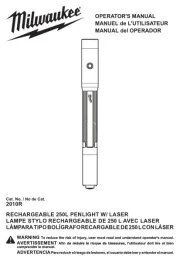
15 Juli 2025
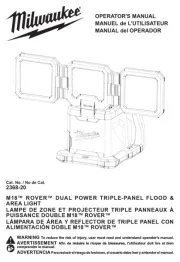
14 Juli 2025
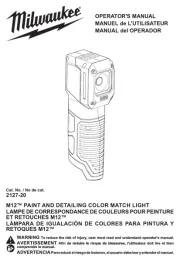
14 Juli 2025
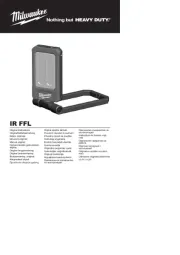
14 Juli 2025

10 April 2024

10 April 2024

10 April 2024

10 April 2024

10 April 2024

10 April 2024
Handleiding Zaklamp
- DeWalt
- EverActive
- Life Gear
- Klein Tools
- Parkside
- Carson
- Silverline
- Steren
- Ansmann
- Eisemann
- WAGAN
- Toolcraft
- Einhell
- Velleman
- FoxFury
Nieuwste handleidingen voor Zaklamp
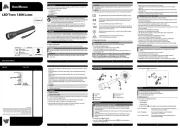
16 Juli 2025
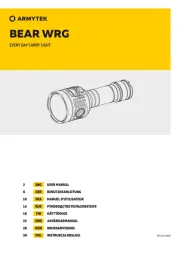
14 Juli 2025
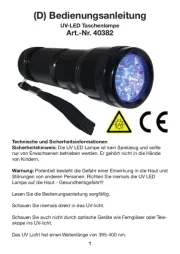
10 Juli 2025
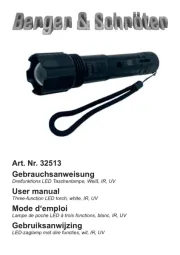
5 Juli 2025
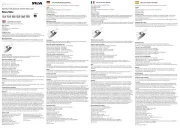
4 Juli 2025
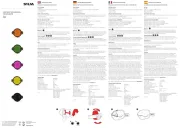
4 Juli 2025

3 Juli 2025

3 Juli 2025
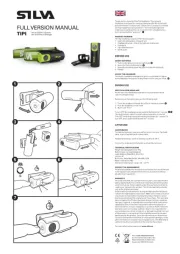
3 Juli 2025

2 Juli 2025